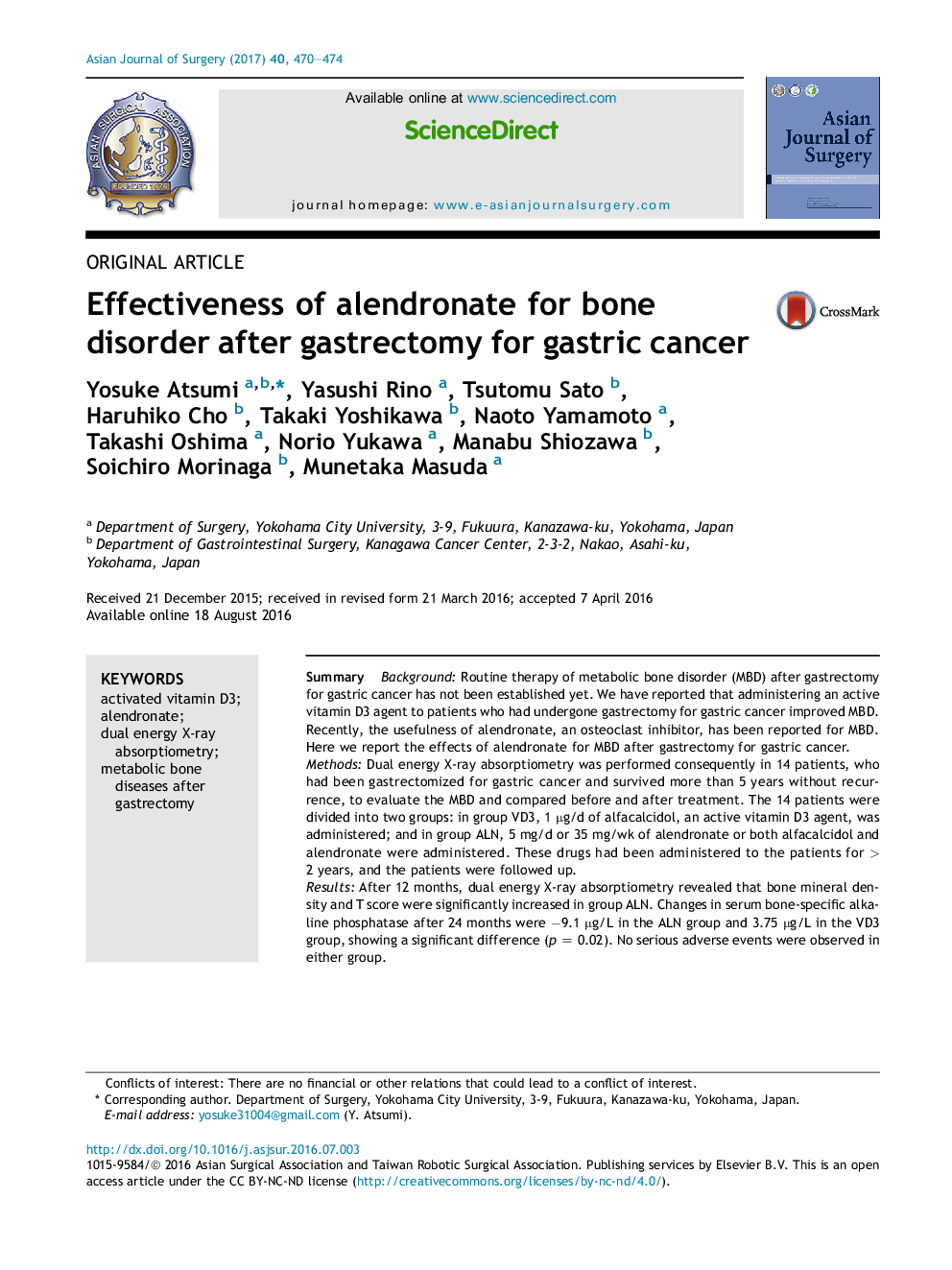| کد مقاله | کد نشریه | سال انتشار | مقاله انگلیسی | نسخه تمام متن |
|---|---|---|---|---|
| 5731466 | 1611739 | 2017 | 5 صفحه PDF | دانلود رایگان |
SummaryBackgroundRoutine therapy of metabolic bone disorder (MBD) after gastrectomy for gastric cancer has not been established yet. We have reported that administering an active vitamin D3 agent to patients who had undergone gastrectomy for gastric cancer improved MBD. Recently, the usefulness of alendronate, an osteoclast inhibitor, has been reported for MBD. Here we report the effects of alendronate for MBD after gastrectomy for gastric cancer.MethodsDual energy X-ray absorptiometry was performed consequently in 14 patients, who had been gastrectomized for gastric cancer and survived more than 5 years without recurrence, to evaluate the MBD and compared before and after treatment. The 14 patients were divided into two groups: in group VD3, 1 μg/d of alfacalcidol, an active vitamin D3 agent, was administered; and in group ALN, 5 mg/d or 35 mg/wk of alendronate or both alfacalcidol and alendronate were administered. These drugs had been administered to the patients for > 2 years, and the patients were followed up.ResultsAfter 12 months, dual energy X-ray absorptiometry revealed that bone mineral density and T score were significantly increased in group ALN. Changes in serum bone-specific alkaline phosphatase after 24 months were â9.1 μg/L in the ALN group and 3.75 μg/L in the VD3 group, showing a significant difference (p = 0.02). No serious adverse events were observed in either group.ConclusionThese results showed the usefulness of alendronate and alendronate+activated vitamin D3 combination therapy, suggesting that these treatments might prevent postgastrectomic MBD.
Journal: Asian Journal of Surgery - Volume 40, Issue 6, November 2017, Pages 470-474
